The Fortified Church of Biertan (Birthälm), Sibiu County
This destination guide covers a visit to the Saxon fortified church of Biertan (Birthälm) in Sibiu County, Romania.
The road to Biertan
Having visited the Saxon fortified churches of Criț and Meșendorf, it was time to continue my road trip through Transylvania.
I would head from Brașov County into Sibiu County by taking the DN13 towards Sighișoara, from where I would head west on the DN14.
In the town of Șaroș pe Târnave I would get off the main road and drive a few miles south to the town of Biertan.
I’ve visited Biertan and its Saxon fortified church before, but as it’s such an impressive sight I didn’t mind stopping there again.
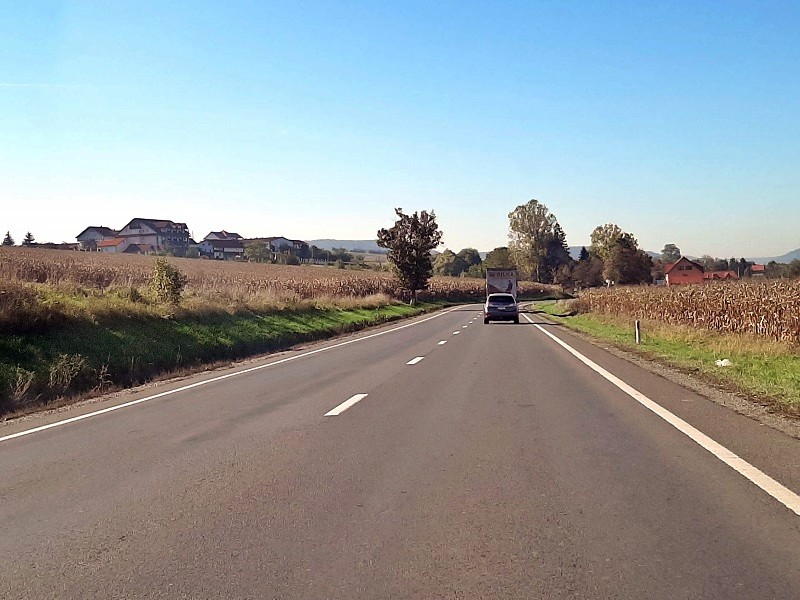

Town centre
As you arrive at the town centre of Biertan, the hilltop Saxon fortified church can be seen towering above all the other houses.
The combination of its hilltop location, immense size, and the fortifications surrounding it make the Saxon fortified church in Biertan one of the most picturesque sights in all of Transylvania.
Biertan (called Birthälm in German by the Transylvanian Saxons) is a small but rather cute town.
Founded by Saxon settlers in the 13th century, Biertan quickly grew into an important market town that rivalled even the larger city of Mediaș nearby in importance.
Surrounding the town square are a few typical Saxon houses, as well as the general school and town hall.
The fortified church of Biertan has always been one of the most important in all of Transylvania.
Between 1572 and 1867 it even was the the seat of the Bishop of the Evangelical Church of the Augsburg Confession in Romania.
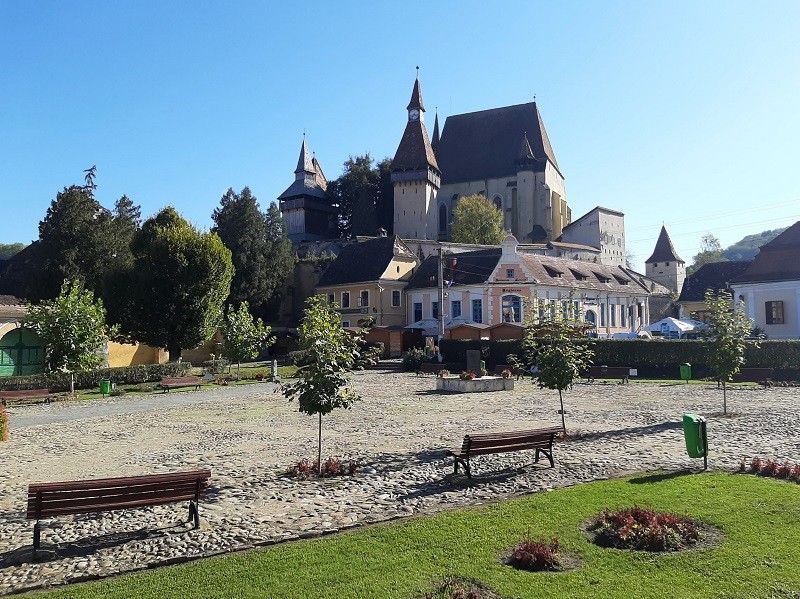

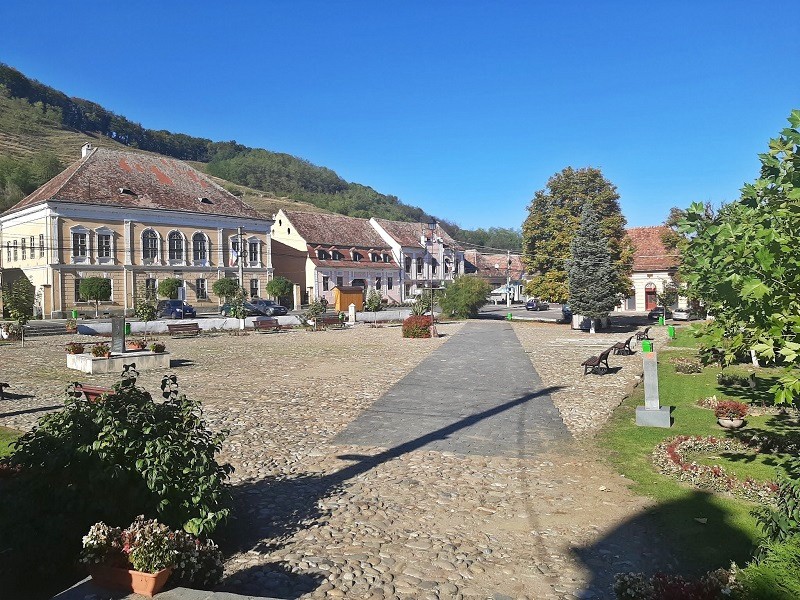


Lunch
Before I embarked on my visit of Biertan’s fortified church, I stopped for lunch at the only restaurant in town called Medieval Unglerus.
The restaurant serves some good Romanian fare for affordable prices and offers both indoor and outdoor seating.
I took a seat on the terrace and enjoyed a plate of tochitură, a delicious meat stew accompanied by polenta, an egg, sour cream, and grated cheese.
Apart from the restaurant you also find a bank, ATM and some small supermarkets in Biertan.
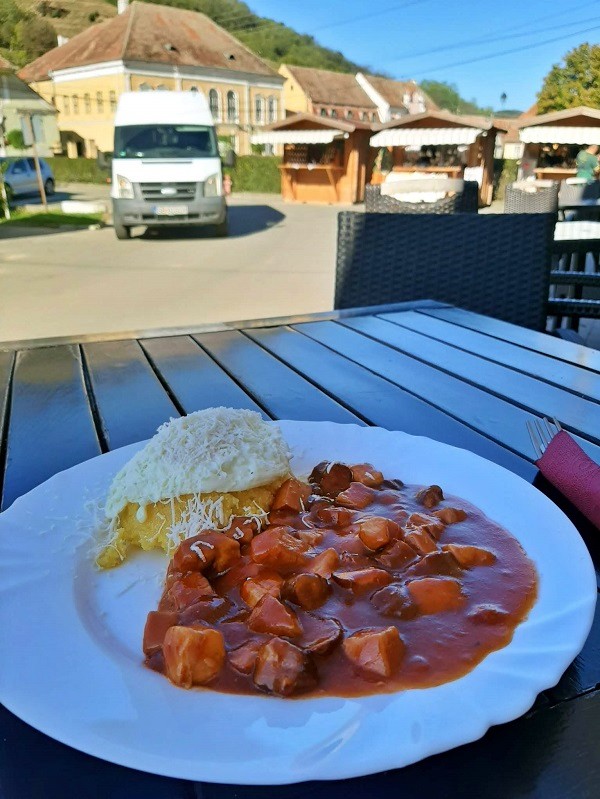
Church fortifications
Biertan’s Saxon fortified church is inscribed on the UNESCO World Heritage list and is open every day of the week from 10am to 5pm.
To visit the fortified church, visitors must purchase an entrance ticket that costs 15 lei (€3).
As you enter the premises you will instantly notice how impressive the fortifications are.
The Saxon fortified church in Biertan is encompassed by three layers of walls, and its fortifications include two baileys and several defensive towers.
The fortifications were built in different stages, starting with the inner ring in the 14th century, and the outer two being added in the 16th and 17th centuries.
To access the inner courtyard of the church compound, visitors must ascend a covered wooden staircase that is around 100 meters long.





Towers
Upon reaching the top of the hill and entering the church compound, I decided to first take a look at the fortifications outside before heading into the church itself.
Of the defensive towers surrounding the church, the Mausoleum Tower is perhaps the most interesting as it contains some epitaphs and grave slaps of several bishops and priests.
The Catholic Tower, situated in the southern part of the church complex, was used by the few Transylvanian Saxons of Biertan who adhered to the Catholic denomination even after the majority of their fellow citizens had converted to Lutheranism following the Reformation.
Inside the tower, visitors can admire some faded yet beautiful frescoes adorning the walls.

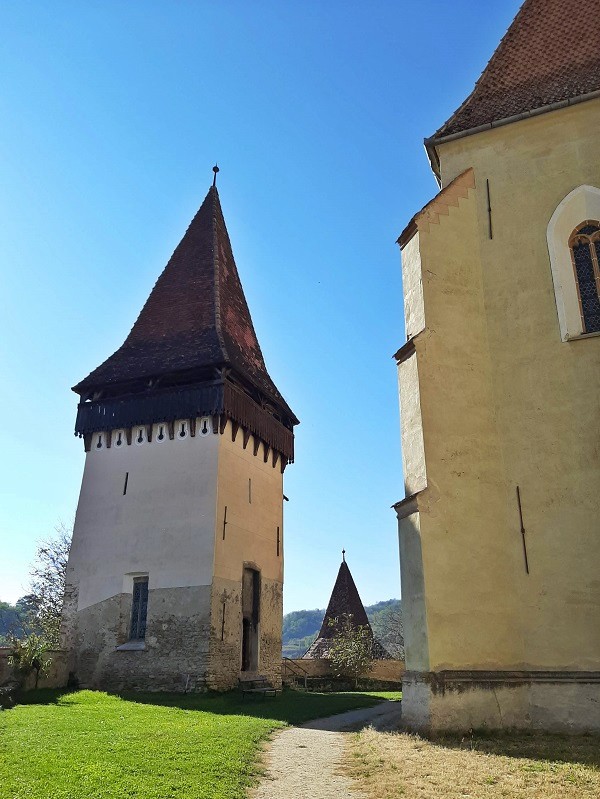
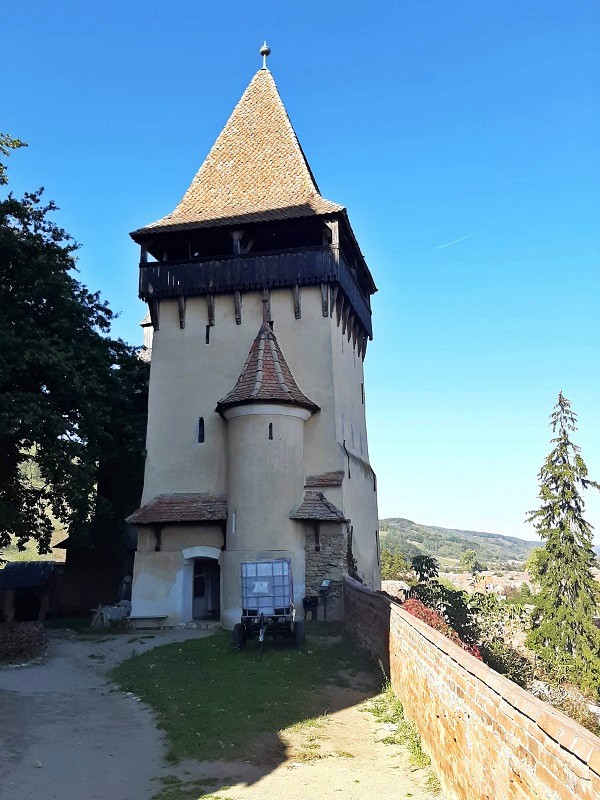
Views
From the ramparts and towers of the fortified church, you have some excellent views over the town of Biertan and the surrounding countryside.
The ramparts also serve as a great vantage point from which visitors can view the multiple layers of fortifications surrounding the church.
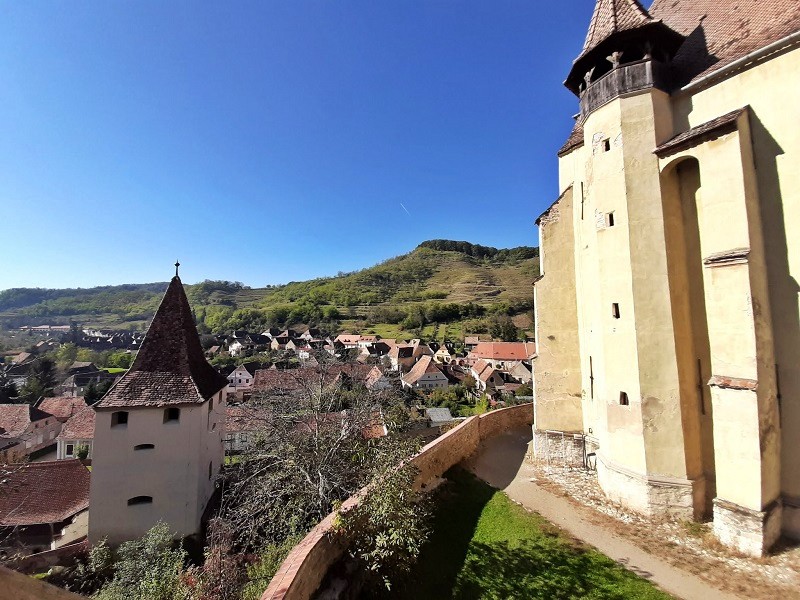

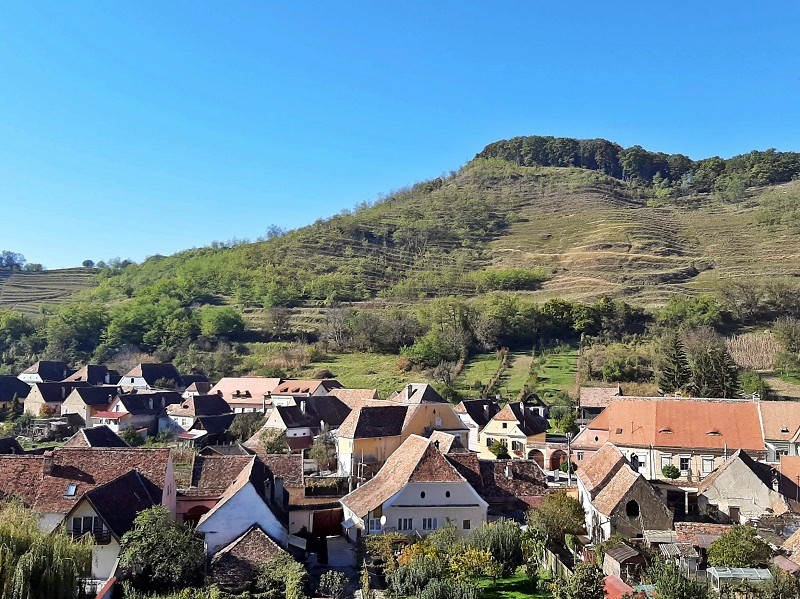

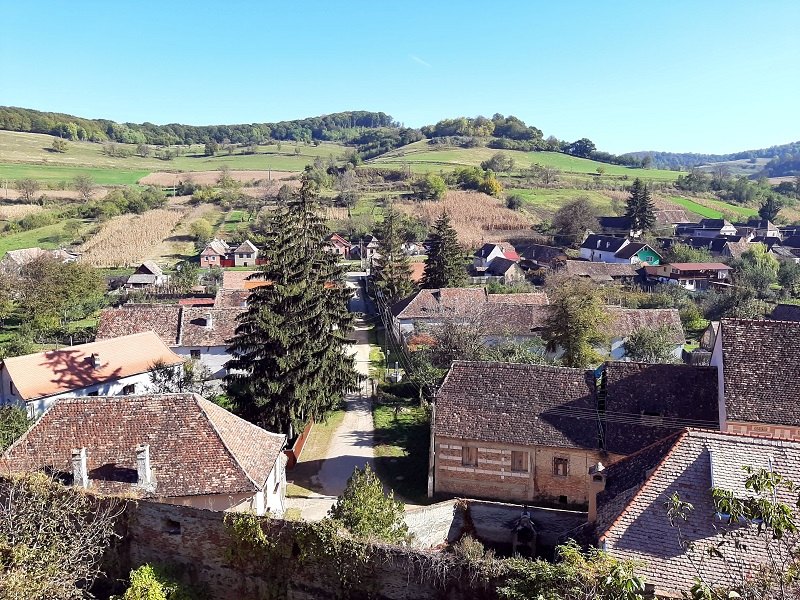
Church exterior
The fortified church of Biertan is a magnificent example of Late Gothic architecture and was constructed in the 15th century.
Biertan’s massive, three-aisled hall church was built on the site of an earlier Romanesque church.
The church’s structure appears almost like a square block due to the limited space available on the hill.
While the nave is only 26 meters long, it is 20 meters wide and 16 meters high, giving it an impressive and imposing appearance.
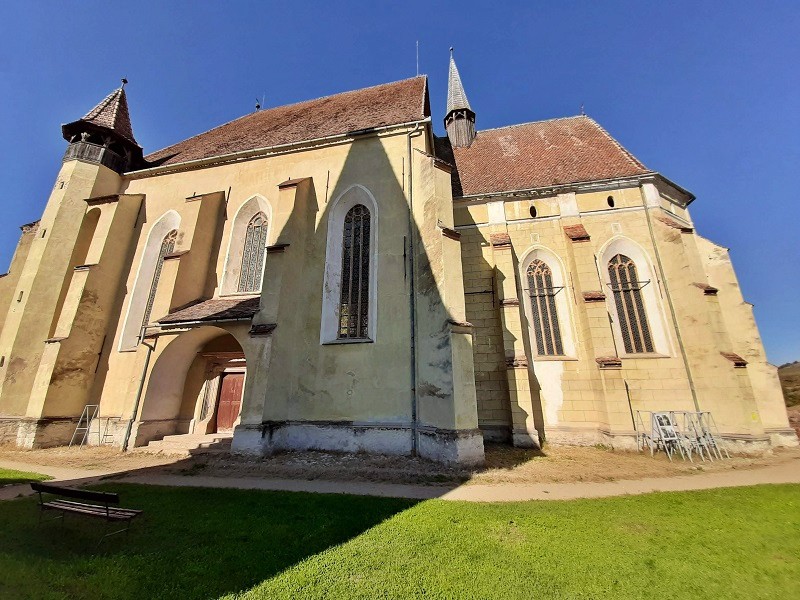
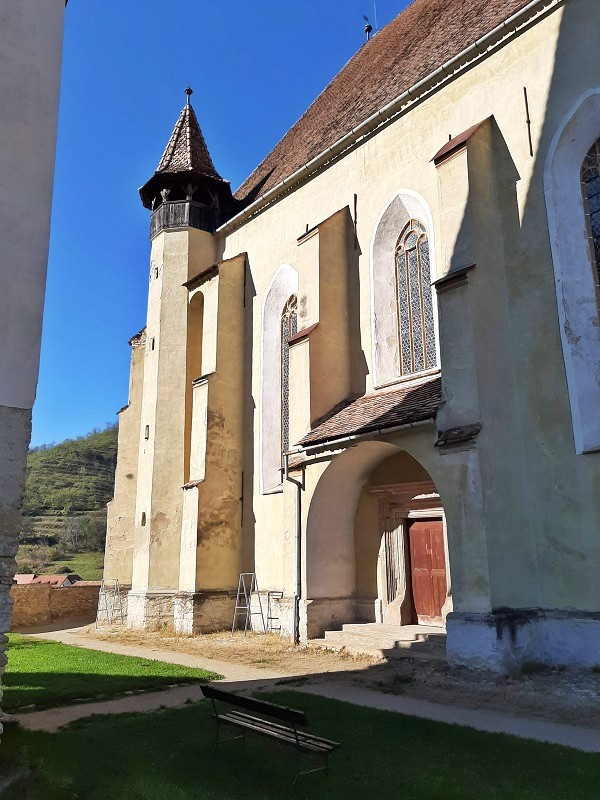

Inside the church
The ceiling of the church features a beautiful net vault, which is an advanced form of the ribbed vault that emerged during the Late Gothic period.
Several historical flags of the guilds of Biertan, such as the Tailor’s Guild and Shoemaker’s Guild, can also be found inside the church.
At the church altar you can find a magnificent winged altarpiece.
The central part of this altarpiece displays the crucifixion of Jesus, while the surrounding paintings portray the life of the Virgin Mary, to whom the church is dedicated.
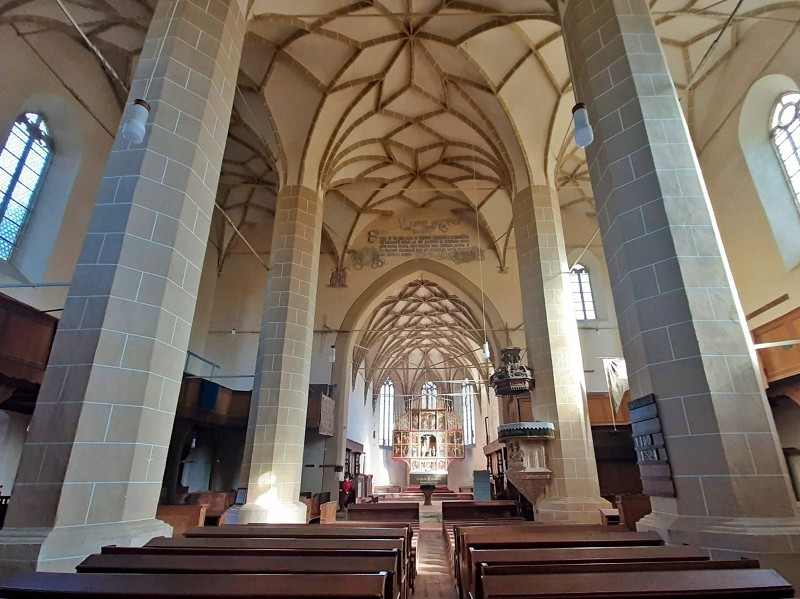



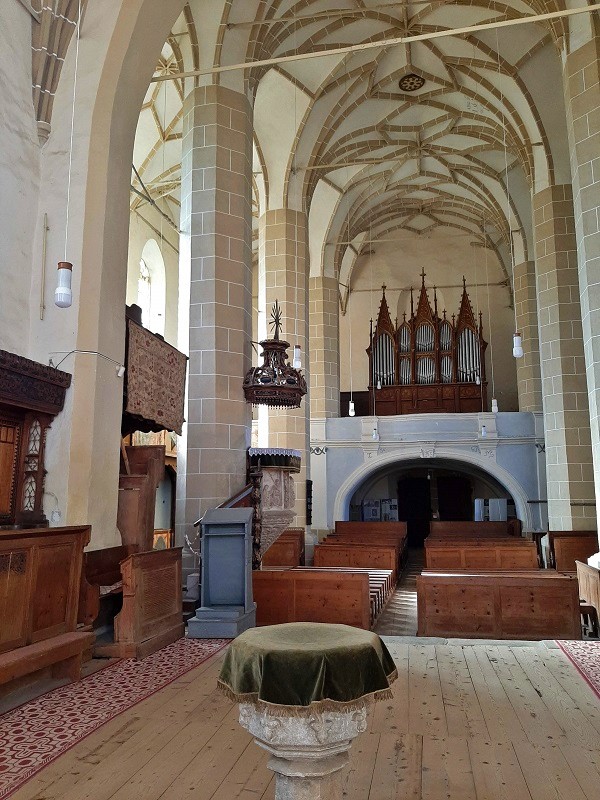
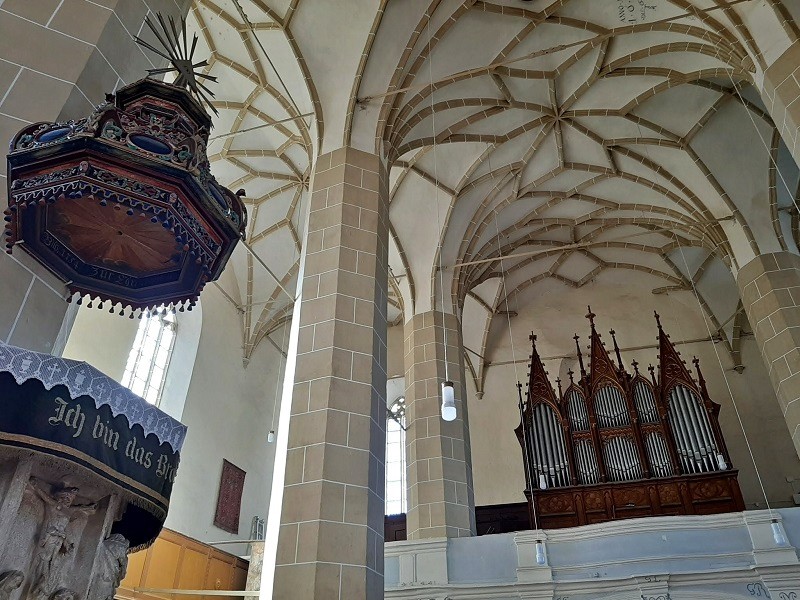
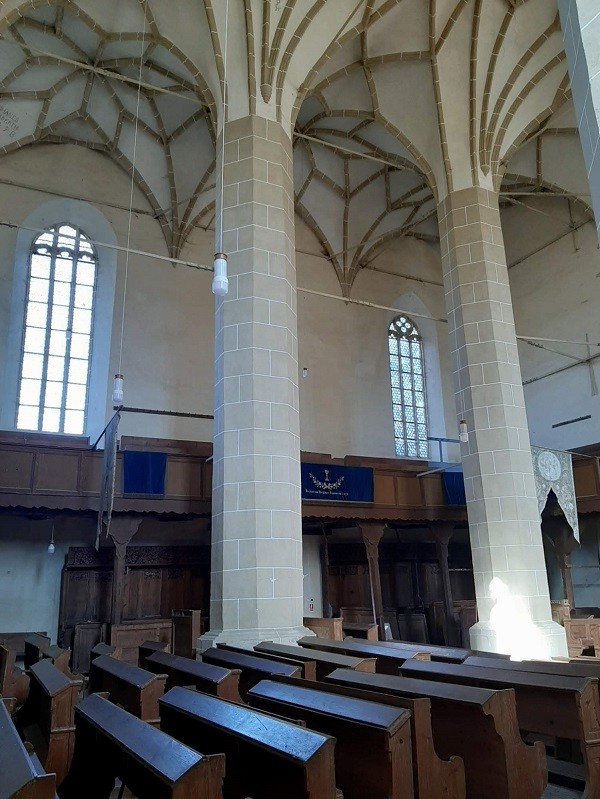

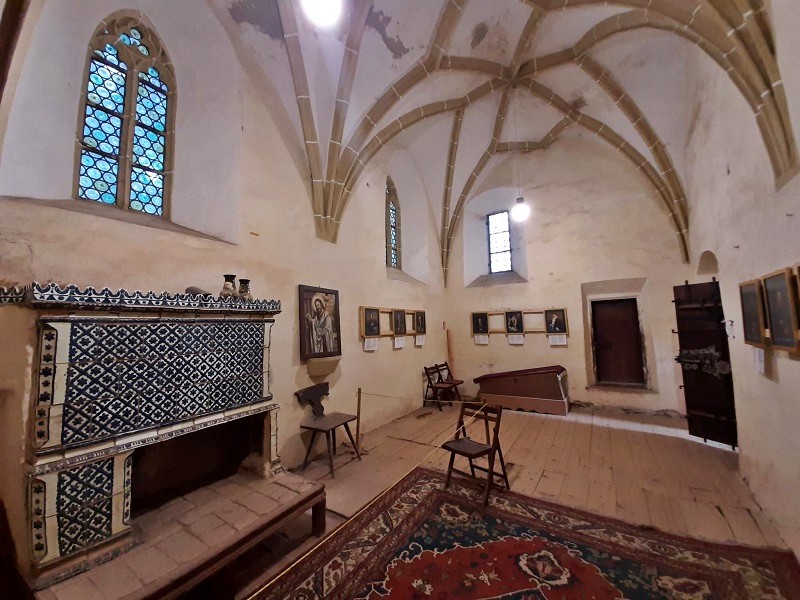
Walking through Biertan
Having visited the church, I headed back downhill to walk a bit through the town.
Whether you look at it from up close or from further away, Biertan’s fortified church remains a stunning sight.
If you have the time, it’s really worth it to wander a bit around town or to hike up into the surrounding hills to admire the church from a distance.
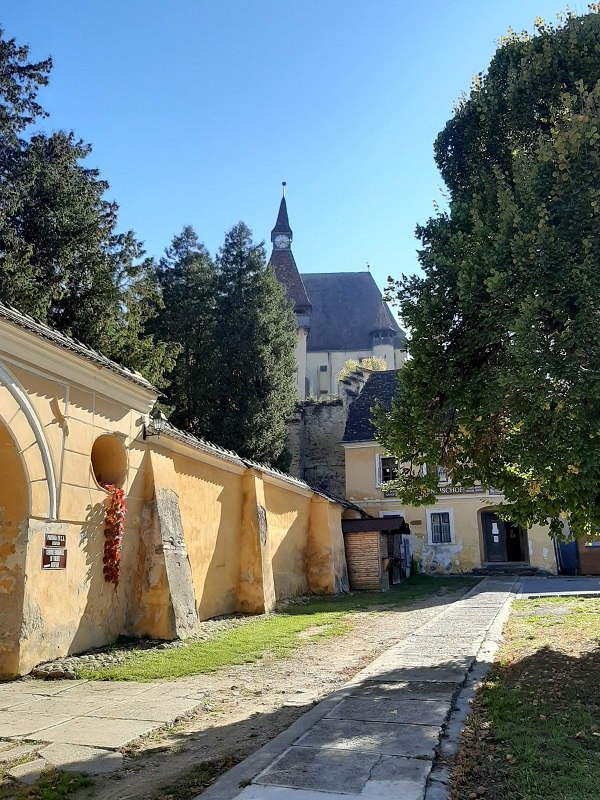
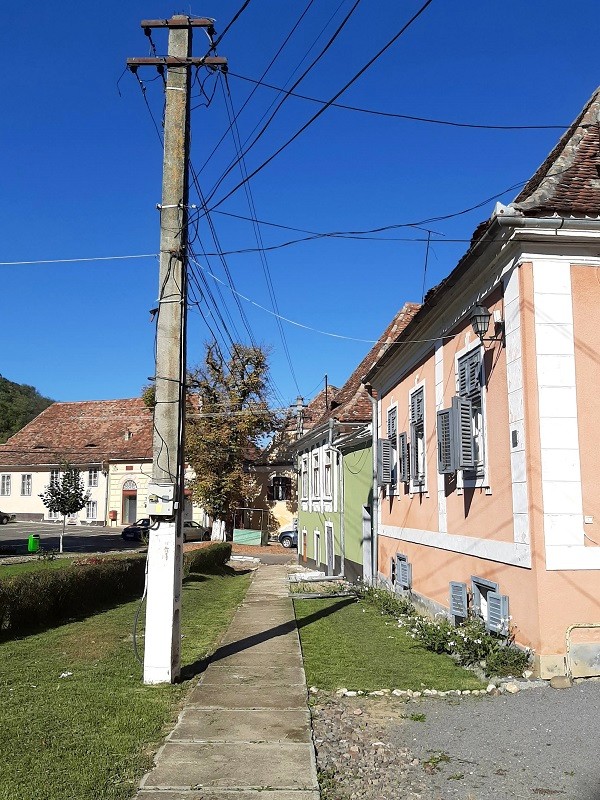
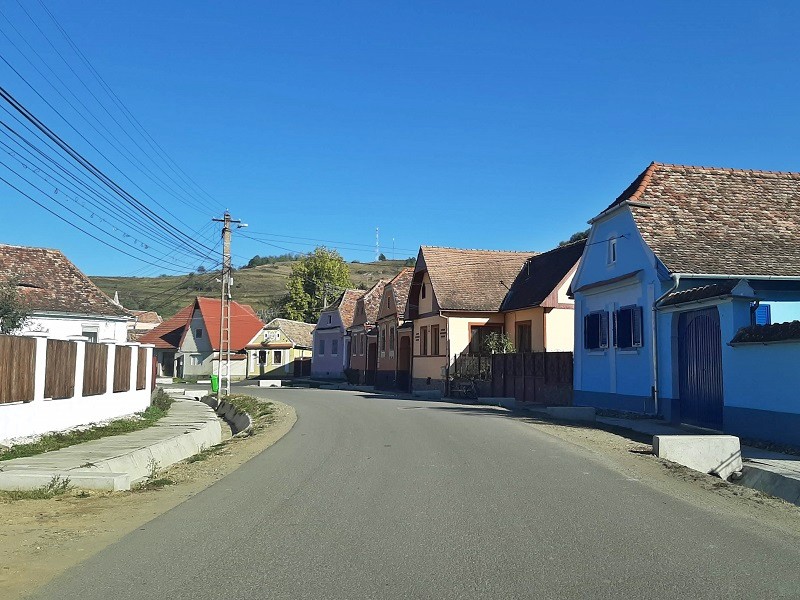
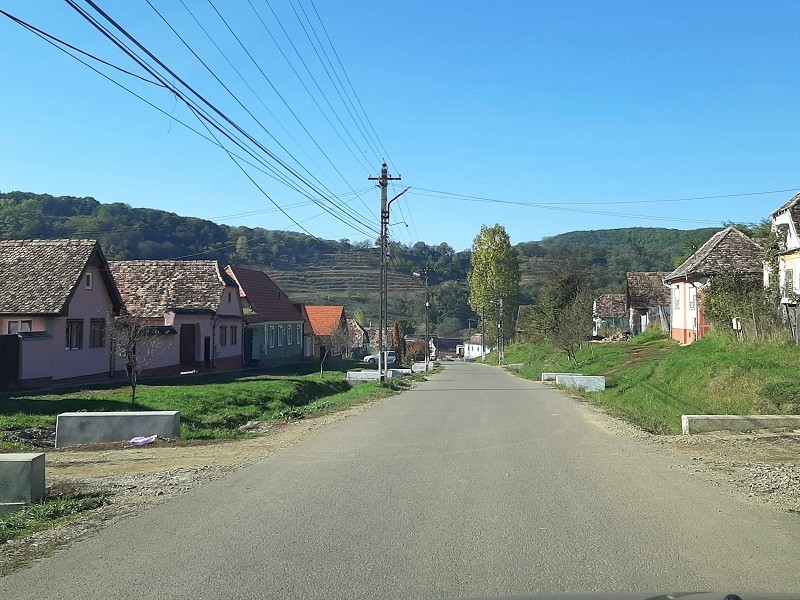
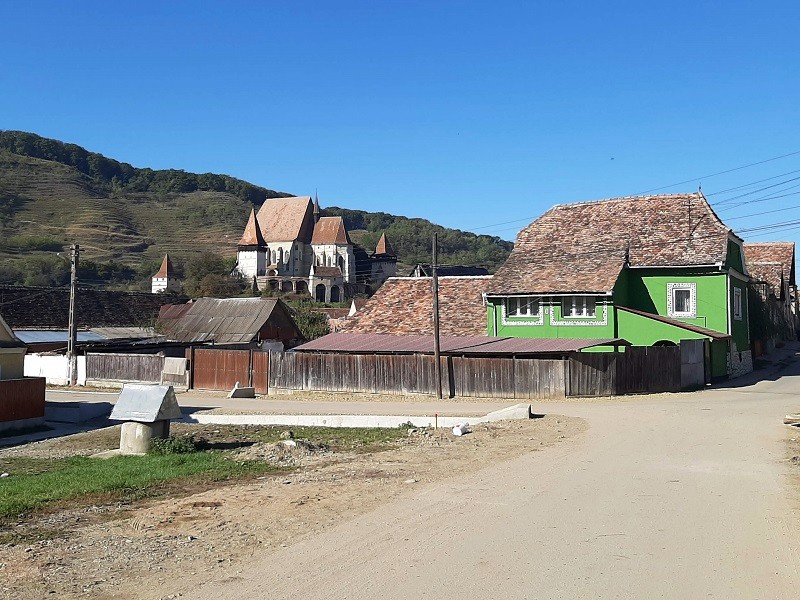
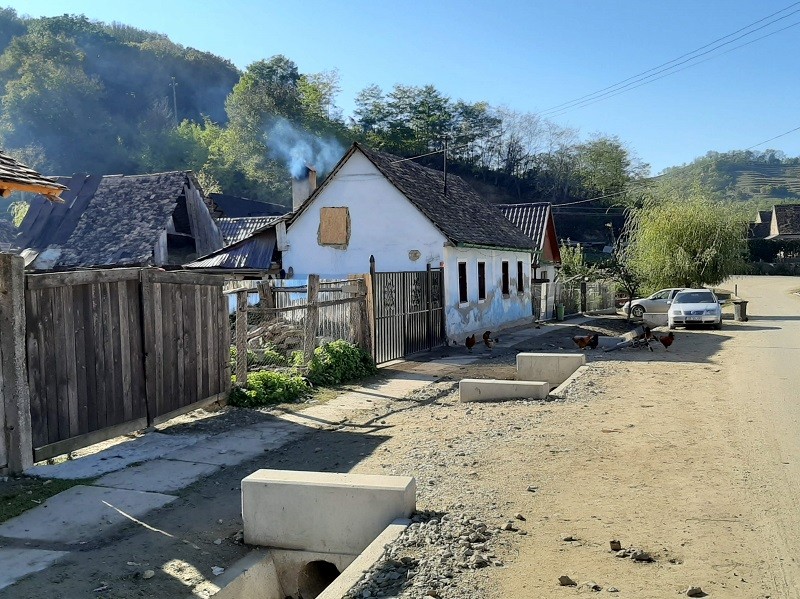
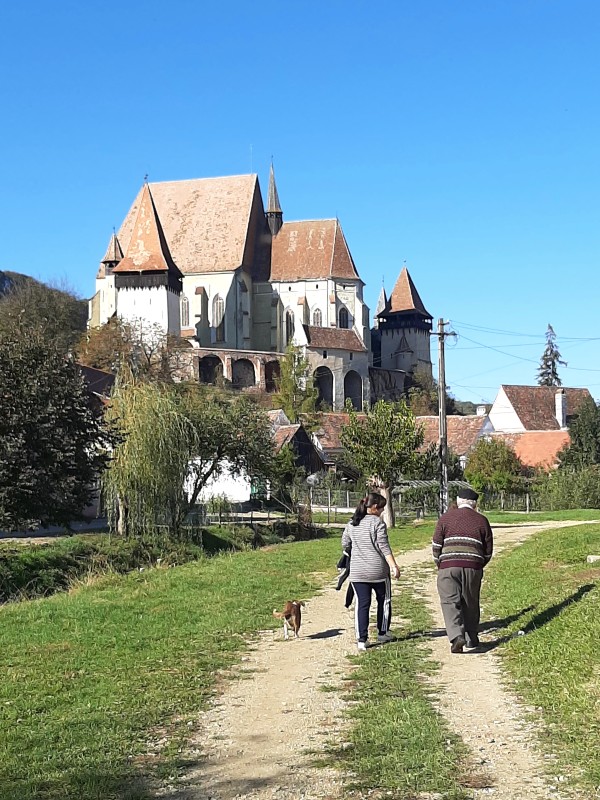

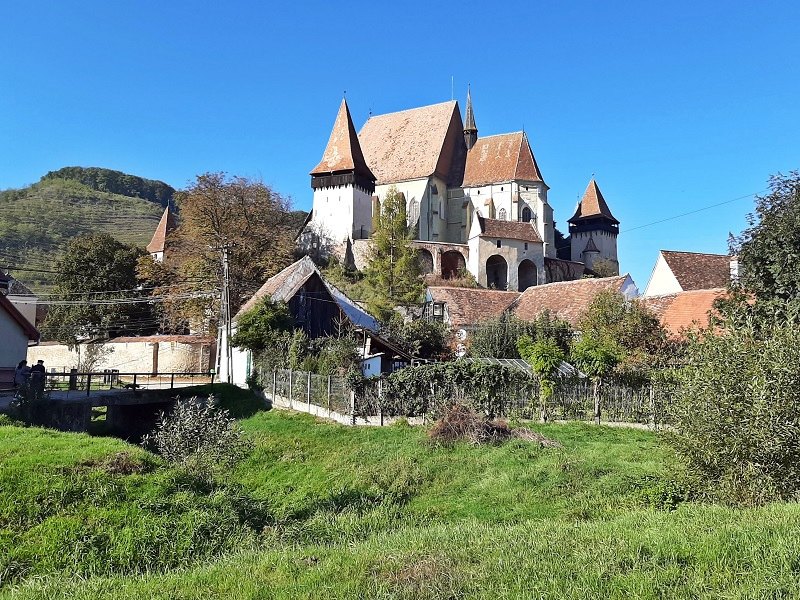
Conclusion
The Saxon fortified church in the town of Biertan (called Birthälm by the German-speaking locals) is one of the most impressive in all of Transylvania.
Due to its hilltop location, three layers of fortifications and towering shape, Biertan’s church certainly makes for an impressive sight.
It’s great fun to explore the fortifications and defensive towers and to admire the fine views from the ramparts over the town.
The Late Gothic church itself is also stunning, featuring a beautiful net vault ceiling and a magnificent winged altarpiece.
Trip report index
This article is part of the ‘Visiting the Saxon Fortified Churches of Transylvania‘ trip report, which consists of the following chapters:
1. The Fortified Church of Harman (Honigberg), Brasov County
2. The Fortified Church of Prejmer (Tartlau), Brasov County
3. The Fortified Church of Feldioara (Marienburg), Brasov County
4. A Visit to Rupea Fortress
5. The Fortified Church of Homorod (Hamruden), Brasov County
6. Racoș: Exploring an Extinct Volcano and Abandoned Castle
7. In the Footsteps of King Charles: A Visit to Viscri, Romania
8. A Visit to the Fortified Church of Viscri, Brasov County
9. A Night Walk Around the Citadel and Old Town of Sighisoara
10. Review: Hotel Casa Wagner, Sighisoara, Romania
11. The Fortified Church of Saschiz (Keisd), Mureș County
12. The Fortified Church of Cloasterf (Klosdorf), Mureș County
13. The Fortified Church of Mesendorf (Meschendorf), Brasov County
14. The Fortified Church of Crit (Deutsch-Kreuz), Brasov County
15. The Fortified Church of Biertan (Birthälm), Sibiu County (current chapter)
16. The Fortified Church of Hosman (Holzmengen), Sibiu County
17. Review: Brukenthal Palace Hotel, Avrig
18. A Visit to Sambata de Sus and the Brancoveanu Monastery
19. Into the Carpathians: A Beautiful Drive to Moieciu de Sus

